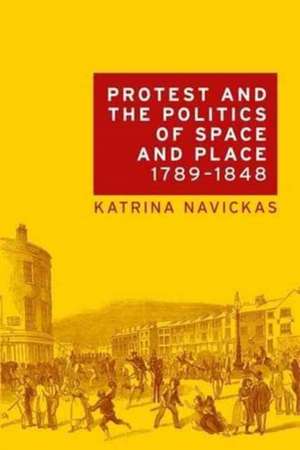Protest and the Politics of Space and Place, 1789-1848
Autor Katrina Navickasen Limba Engleză Paperback – 16 mar 2017
This book examines the rise of mass movements for democracy and workers' rights in northern England. It surveys movements throughout the whole period from the first working-class radical societies in the 1790s to trade unions and the Chartists in the 1840s. It focuses on protesters' use of space and defence of place.
The study is a provocative narrative of the closing down of public space and dispossession from place, including the attempts by national and local governments to clamp down on working-class political action by restricting their meeting sites. The 'Peterloo Massacre' of 1819 is also explored - a turning point in the development of mass protest and its suppression by the government, as radicals, organised labour and, later, Chartists fought back by challenging their exclusion from public spaces, creating their own sites and eventually constructing their own buildings. The book also uncovers new evidence of 'resistance from below' in rural areas of northern England, including rural Luddism.
Protest and the politics of space and place, 1789-1848 will primarily appeal to students and academic historians, but it also has cross-disciplinary interest for geographers and scholars of social movements in the UK, France and North America. It also offers specific interest for local history societies and political groups in northern England.
Preț: 208.38 lei
Nou
39.88€ • 41.58$ • 33.14£
Carte disponibilă
Livrare economică 28 februarie-14 martie
Livrare express 13-19 februarie pentru 33.70 lei
Specificații
ISBN-10: 1526116707
Pagini: 352
Dimensiuni: 156 x 234 x 30 mm
Greutate: 0.54 kg
Editura: MANCHESTER UNIVERSITY PRESS
